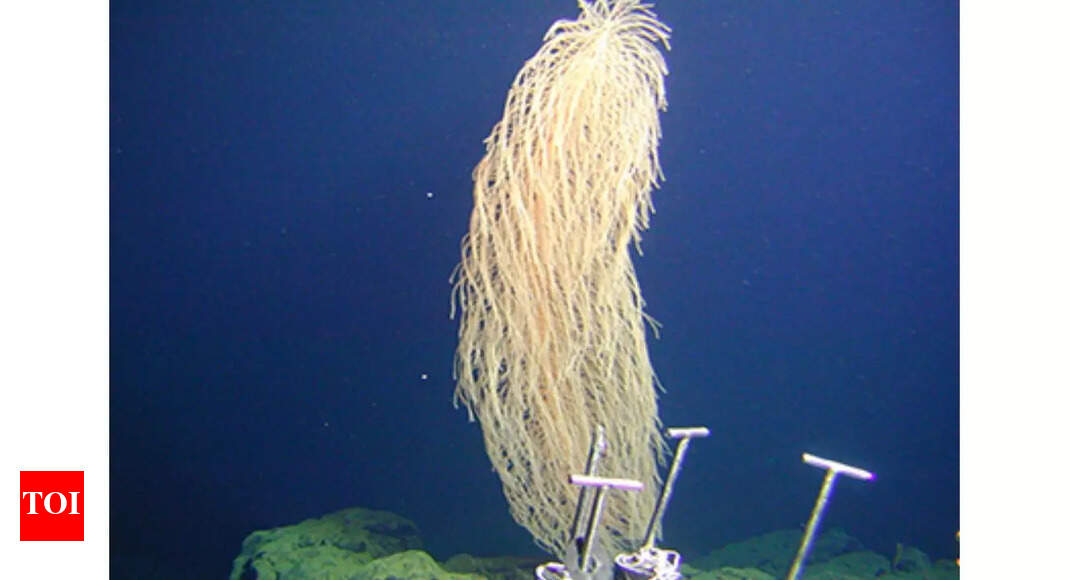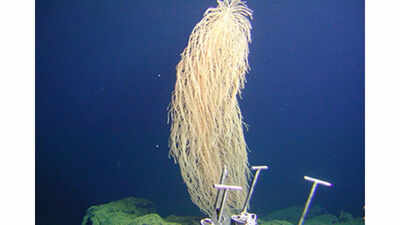
In an exciting fusion of science and creativity, marine biologists have identified a new deep-sea coral species named Iridogorgia chewbacca. Native to the tropical western Pacific Ocean, this coral enriches our understanding of ocean biodiversity and showcases the remarkable ecosystems that thrive in the ocean’s dark, unexplored depths. Its distinctive, hair-like branches and iridescent surface give it a striking appearance, capturing the attention of researchers and the public alike. Beyond its visual appeal, I. chewbacca represents the complexity and richness of deep-sea habitats, highlighting the importance of continued exploration and conservation of these largely mysterious marine environments.
Iridogorgia chewbacca: Unique coral found near Molokaʻi and Mariana Trench
Iridogorgia chewbacca was first observed off the coast of Molokaʻi, Hawaiʻi, and later near the Mariana Trench. Its long, flexible, hair-like branches resemble the fur of Chewbacca, the beloved Wookiee from Star Wars, inspiring the coral’s imaginative name. This blend of marine science and pop culture makes it one of the most visually striking discoveries in recent years.
Physical characteristics
Belonging to the genus Iridogorgia, I. chewbacca possesses several distinctive features:
- Branch structure: Long, shaggy branches growing up to 15 inches (38 cm) in length, giving it an upright, furry appearance.
- Colony size: Individual corals can reach between 20 inches (50 cm) and 4 feet (1.2 meters) in height, standing alone on rocky substrates.
- Surface texture: Iridescent, reflective branches that shimmer in the faint light of the deep sea.
- Feeding mechanism: As a filter feeder, it captures “marine snow” — organic particles drifting down from the ocean surface — sustaining itself in the nutrient-limited depths.
How morphology and genetics confirmed the unique identity of Iridogorgia chewbacca
Scientists confirmed the uniqueness of Iridogorgia chewbacca using both morphological and genetic analyses. By studying mitochondrial and nuclear markers, researchers were able to differentiate it from other species in the Iridogorgia genus. This combination of traditional observation and modern genetic tools ensures a precise and reliable classification. A study published in Zootaxa showed that analysing specific DNA markers helped clearly separate I. chewbacca from other corals, proving it is a completely new species.
How Iridogorgia chewbacca survives 400–1,000 metres below
Iridogorgia chewbacca resides at depths ranging from 400 to 1,000 metres, well below the sunlit photic zone. Its solitary growth and preference for hard substrates make it a rare and intriguing inhabitant of the mesopelagic ecosystem. The discovery of such species underscores the rich biodiversity that exists in the deep ocean, an environment still largely unexplored by humans.
Conservation considerations of the new species discovered
The existence of I. chewbacca highlights the need for careful study and protection of deep-sea habitats. As human activities such as deep-sea mining and fishing extend further into these environments, understanding the distribution and ecology of rare species becomes crucial. Preserving these unique ecosystems ensures the survival of their remarkable biodiversity for future generations.The discovery of Iridogorgia chewbacca, the “Wookiee of the Deep Sea,” expands our knowledge of marine life and reminds us of the many mysteries still hidden beneath the ocean’s surface. Its striking appearance and rare habitat make it a symbol of the wonders that await in the unexplored depths, inspiring both scientific curiosity and a sense of awe at the natural world.Also read | Deep-sea discoveries: Pink lobsters, goofy squid, and 40 new species found in Mar del Plata Canyon








